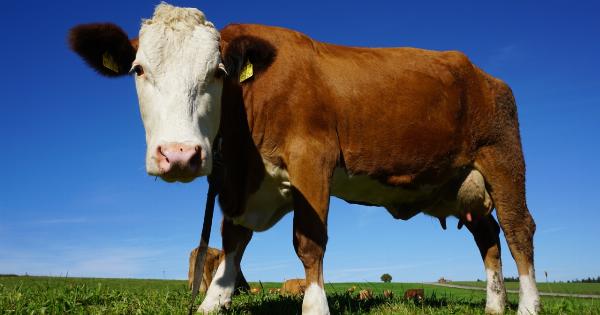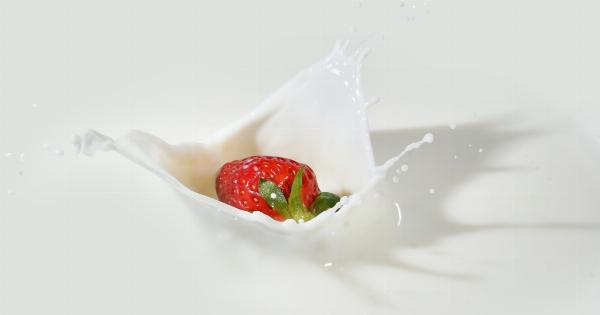Parkinson’s disease is a neurodegenerative disorder that affects millions of people worldwide.
Characterized by the progressive loss of dopamine-producing cells in the brain, Parkinson’s disease leads to a range of motor and non-motor symptoms such as tremors, rigidity, and cognitive impairment.
Understanding Parkinson’s Disease
The exact cause of Parkinson’s disease remains unknown, but research suggests a combination of genetic, environmental, and lifestyle factors contribute to its development.
While there is currently no cure for Parkinson’s disease, various treatment options aim to manage symptoms and improve quality of life.
Exploring Diet and Parkinson’s Disease
In recent years, researchers have been studying the potential impact of diet on Parkinson’s disease. One particular area of interest is the relationship between low-fat dairy consumption and the risk of developing Parkinson’s disease.
Link Between Dairy Consumption and Parkinson’s Disease
Several epidemiological studies have investigated the association between dairy consumption and Parkinson’s disease risk.
One large study published in the journal “Neurology” found that individuals who consumed more than one serving of dairy products per day had a higher risk of developing Parkinson’s disease compared to those who consumed dairy less frequently.
However, it is important to note that the study did not differentiate between low-fat and high-fat dairy products, making it difficult to draw conclusions about the specific impact of low-fat dairy on Parkinson’s disease risk.
Determining the Role of Low-Fat Dairy
To gain a better understanding of the relationship between low-fat dairy and Parkinson’s disease, further research is needed.
A recent study published in the “American Journal of Epidemiology” investigated the association between low-fat dairy consumption and Parkinson’s disease risk.
The study found that individuals who consumed more low-fat dairy had a lower risk of Parkinson’s disease compared to those who consumed low-fat dairy less frequently.
The researchers suggest that compounds found in low-fat dairy products, such as calcium, vitamin D, and certain fatty acids, may have a protective effect on brain health.
Possible Mechanisms of Action
While the exact mechanisms behind the potential protective effects of low-fat dairy on Parkinson’s disease remain unclear, several hypotheses have been proposed:.
1. Calcium and Vitamin D
Low-fat dairy products are often fortified with calcium and vitamin D. Both calcium and vitamin D are important for maintaining bone health, but they may also play a role in brain function.
Some studies have suggested that higher calcium and vitamin D intake is associated with a reduced risk of Parkinson’s disease.
2. Fatty Acids
Low-fat dairy products contain certain types of fatty acids, such as omega-3 and omega-6 fatty acids. These fatty acids have been linked to various health benefits, including reduced inflammation and improved brain function.
It is possible that these fatty acids found in low-fat dairy products contribute to the protective effect against Parkinson’s disease.
3. Other Nutrients
In addition to calcium, vitamin D, and fatty acids, low-fat dairy products also provide other essential nutrients such as protein, phosphorus, and potassium.
These nutrients play important roles in overall health and may indirectly influence the risk of developing Parkinson’s disease.
Conflicting Findings and Limitations
While some studies suggest a potential protective role of low-fat dairy against Parkinson’s disease, there are also conflicting findings.
A study published in the “Neuroepidemiology” journal found no significant association between low-fat dairy consumption and Parkinson’s disease risk.
It is important to acknowledge the limitations of these studies. Most of the research conducted so far has relied on self-reported dietary data, which may introduce errors and bias.
Additionally, factors such as genetic predisposition, lifestyle factors, and overall diet quality may influence the relationship between low-fat dairy and Parkinson’s disease, but they are often challenging to control for in observational studies.
The Importance of a Balanced Diet
While the research on low-fat dairy and Parkinson’s disease is still ongoing, it is important to remember that maintaining a balanced diet overall plays a crucial role in promoting good health.
A nutritious diet should include a variety of foods such as fruits, vegetables, whole grains, lean proteins, and healthy fats.
Conclusion
The relationship between low-fat dairy consumption and Parkinson’s disease is a complex and evolving area of research.
While some studies suggest a potential protective effect of low-fat dairy products against Parkinson’s disease, conflicting findings and limitations in study design highlight the need for further investigation.
Ultimately, it is important to focus on a well-rounded, balanced diet that meets individual nutritional needs for overall health and well-being.
If you have concerns about Parkinson’s disease or dietary choices, speaking with a healthcare professional or a registered dietitian can provide personalized guidance.




























